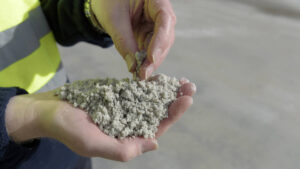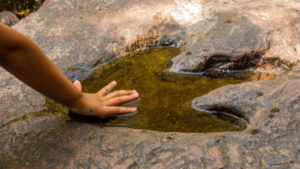Water into wine: Pan Asia Metals turns potential 1Mtpa waste from RK lithium project into valuable by-product

Repurposing the waste stream from its RK project is part of PAM’s ESG outlook. Pic via Getty Images.
- PAM to convert 1mtpa waste from RK project into valuable by-products for the cement industry
- Waste-to-product methods in line with the company’s ESG targets
- RK resource increased by 42% to 14.8Mt @ 0.45% Li2O
- Mine designs and planning underway prior to PFS
Special Report: Critical minerals developer Pan Asia Metals has successfully tested lithium concentrate processing residues at its RK lithium project in Thailand, aimed at converting a waste stream into concrete additives that reduce both the company’s and the cement industry’s carbon footprint.
As part of its environmental, social and governance (ESG) plan, Pan Asia Metals (ASX:PAM) is looking to secure battery and critical metal development projects strategically located near key infrastructure and industry to help facilitate the use of what would otherwise be waste streams and instead create valuable by-products – thereby reducing the overall physical footprint of its future mining operations.
PAM’s RK lithium development is one such project where this waste-to-product method will be implemented.
Earlier this month, the company released a 42% increase to the project’s resources which now stand at 14.8Mt @ 0.45% Li2O, 391 ppm Sn, 77ppm Ta2O5, 0.20% Rb and 237ppm Cs – with 75% of the endowment in the measured and indicated categories.
It also increased contained LCE 46% to 164,500t where the bulk of the mineral wealth is down to just 150m below surface.
Positioning for growth
PAM MD Paul Lock says the positioning of the RK lithium project near major growth and industrial centres, allows the company to consider alternatives to traditional mining and processing waste practices.
“Our objective is to secure projects which are strategically located near key infrastructure and industry, which helps facilitate the use of what would be otherwise waste streams to create valuable by-products and hence reducing the overall physical footprint of PAM’s future mining operations,” Lock says.
“Test work with a major Thai-based cement manufacturer has confirmed that the residue from lithium concentrate processing has application in cement manufacturing, which will convert a processing waste stream into a carbon-reducing by-product.
“Test work will also be applied to residues from lithium chemical manufacturing and test work by the cement manufacturer has confirmed that the siltstone waste from mining is chemically benign.
“We expect to be able to achieve similar outcomes with our mining and beneficiation residues, placing PAM at an advantage over other lithium producers.
“This is a major part of our ESG plan. Our positioning in Chile has the potential to achieve similar outcomes, particularly with residual salt.”
What’s next?
PAM is formulating preliminary mine designs, mine planning and production scheduling to assist with project design and the preparation of a mining lease application and with inputs into the pre-feasibility study (PFS).
It’s also conducting metallurgical test work to investigate the recovery of lepidolite/muscovite into a concentrate and used to test various downstream processing methods to produce a variety of lithium compounds and various potential by-products.
This article was developed in collaboration with Pan Asia Metals, a Stockhead advertiser at the time of publishing.
This article does not constitute financial product advice. You should consider obtaining independent advice before making any financial decisions.
Related Topics

UNLOCK INSIGHTS
Discover the untold stories of emerging ASX stocks.
Daily news and expert analysis, it's free to subscribe.
By proceeding, you confirm you understand that we handle personal information in accordance with our Privacy Policy.








